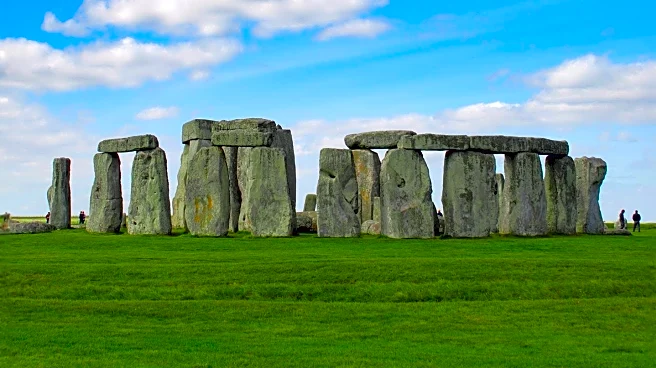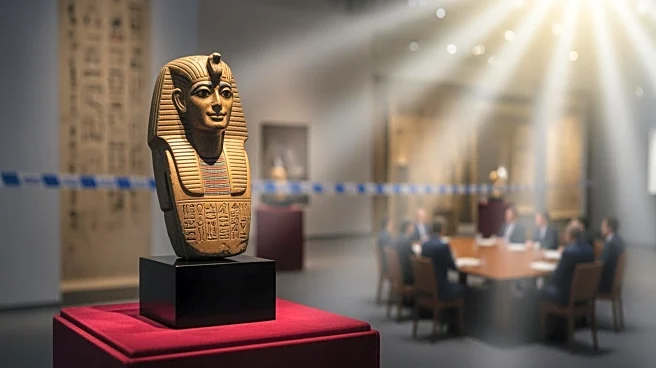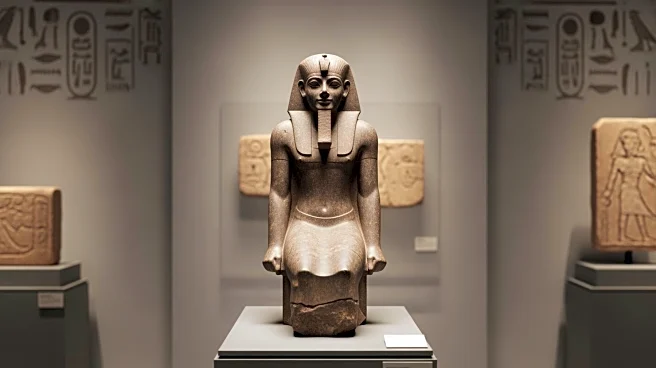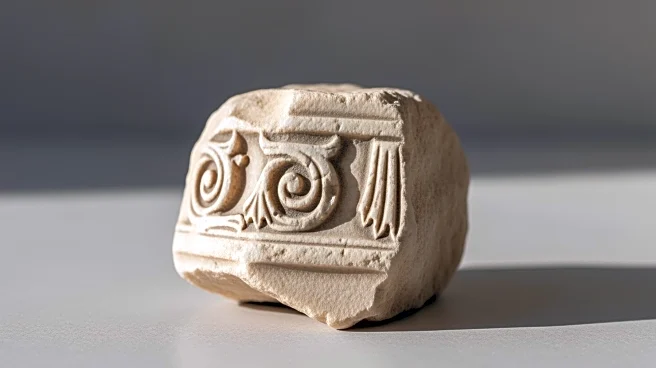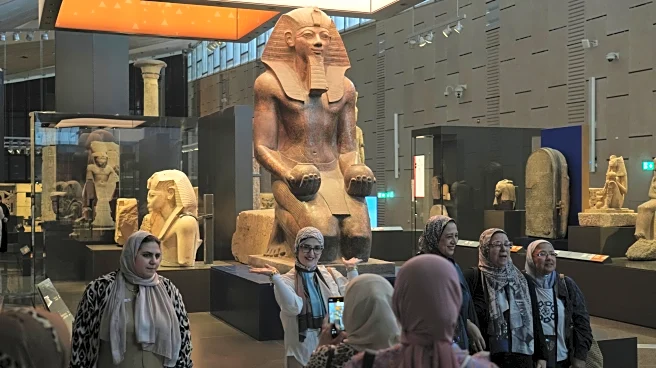What's Happening?
The Parthenon in Athens, Greece, is temporarily free of scaffolding for the first time in 20 years, offering visitors rare, uninterrupted views of the historic site. The scaffolding, which covered the western
facade, was removed last month, allowing visitors to experience the monument in its entirety. This marks the first time in 200 years that the Parthenon is completely free from scaffolding. The restoration work, ongoing since 1975, has corrected previous conservation errors and replaced damaged elements with titanium and new marble. The scaffolding is set to return this month but is expected to be permanently removed by next summer, concluding the restoration efforts.
Why It's Important?
The temporary removal of scaffolding from the Parthenon is significant for cultural heritage and tourism. It allows visitors to appreciate the monument's architectural beauty and historical significance without obstruction. The restoration efforts have preserved the Parthenon for future generations, ensuring its structural integrity and aesthetic appeal. The Parthenon, a UNESCO World Heritage Site, has served various roles throughout history, including as a church, mosque, and army barracks. Its preservation is crucial for understanding ancient Greek culture and its impact on Western civilization. The restoration project highlights the importance of maintaining historical sites and the challenges involved in conservation.
What's Next?
The scaffolding is expected to return this month, with plans for permanent removal by next summer. The restoration project will continue to focus on the west facade's pediment, replacing ancient pieces and modern bolsters. Authorities are preparing to replace the former scaffolding with a safer, aesthetically pleasing setup. The completion of the restoration will enhance the visitor experience and contribute to the site's cultural and economic value. As the project concludes, there may be opportunities for further archaeological discoveries, which could lead to additional conservation efforts.
Beyond the Headlines
The restoration of the Parthenon raises broader questions about the preservation of cultural heritage and the balance between conservation and accessibility. The project's success demonstrates the importance of international collaboration and investment in preserving historical sites. The Parthenon's history of serving various roles reflects the dynamic nature of cultural heritage and its adaptation to changing political and social contexts. The ongoing conservation efforts highlight the challenges of maintaining historical integrity while accommodating modern tourism demands.




